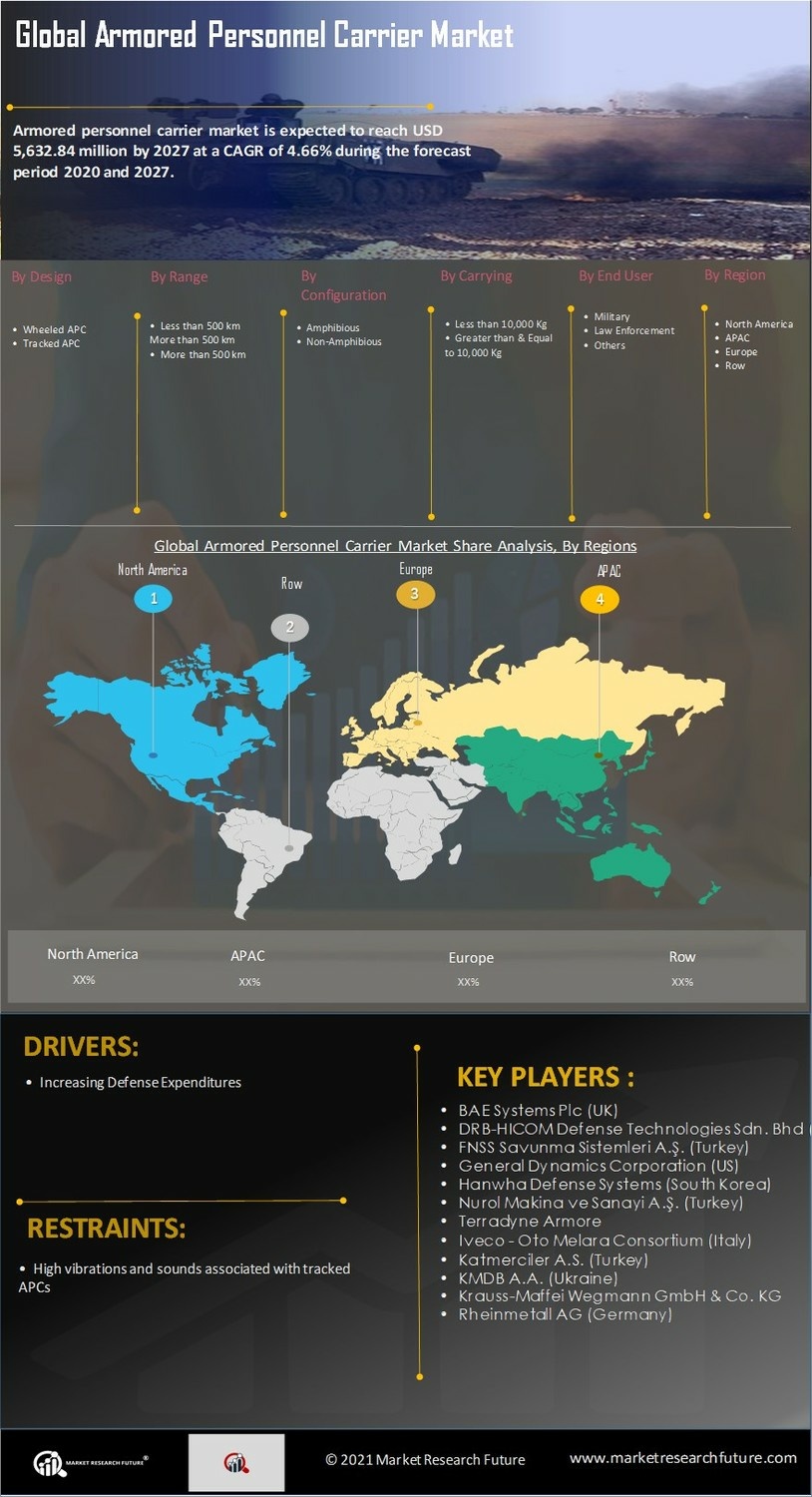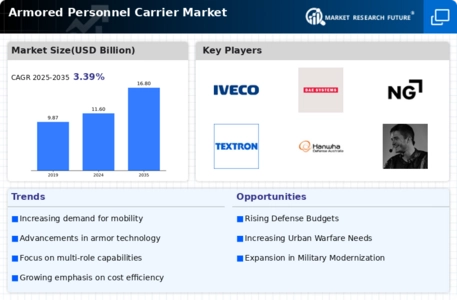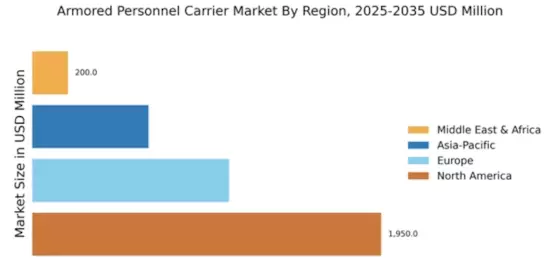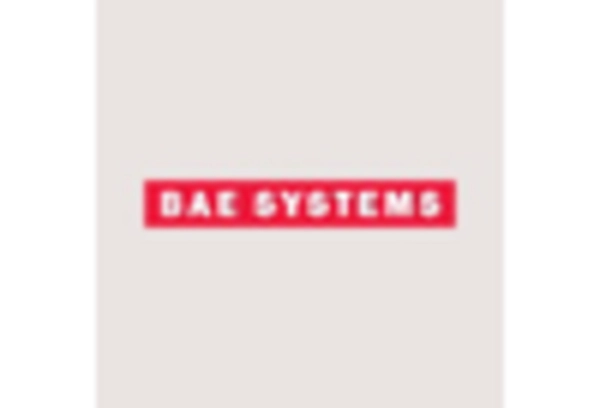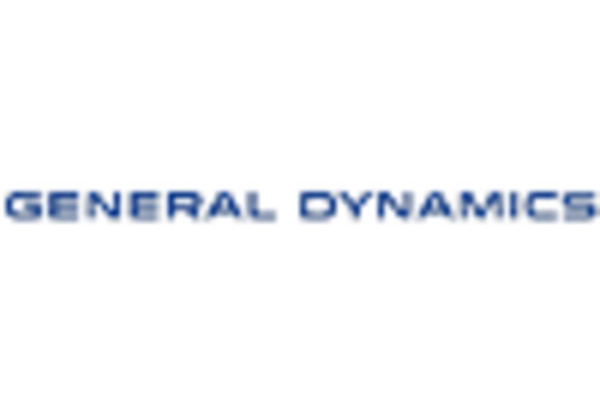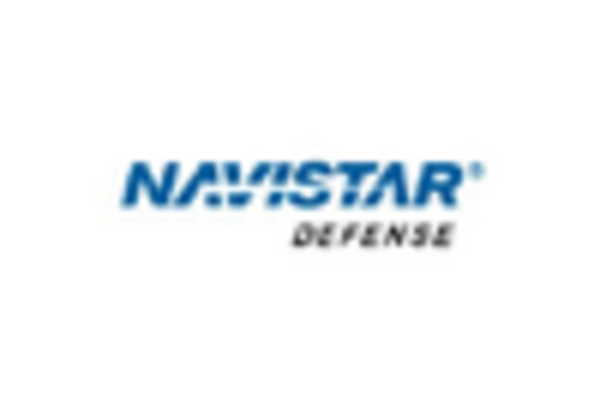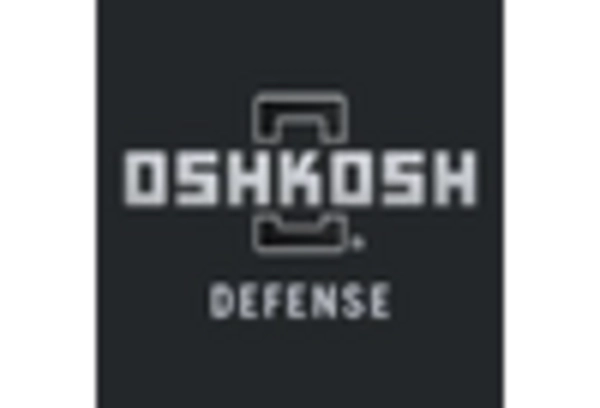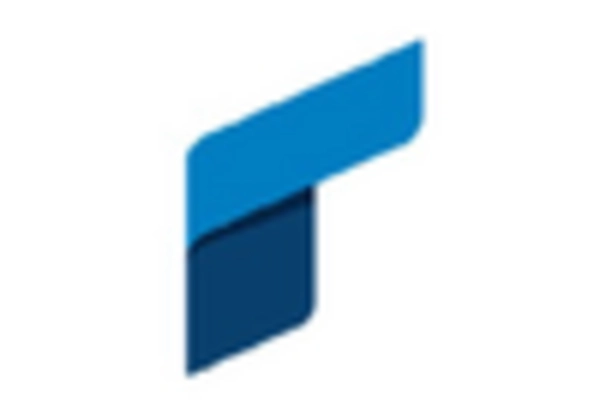North America : Market Leader in Defense
North America continues to lead the Armored Personnel Carrier (APC) market, holding a significant share of 1950.0 million in 2024. The region's growth is driven by increasing defense budgets, modernization of military fleets, and heightened geopolitical tensions. Regulatory support for advanced military technologies further fuels demand, ensuring a robust market environment for APCs.
The United States is the primary player, with key companies like General Dynamics, Oshkosh Defense, and L3Harris Technologies dominating the landscape. The competitive environment is characterized by innovation and strategic partnerships, enhancing the capabilities of APCs. As military needs evolve, the focus on advanced protection and mobility solutions remains paramount, solidifying North America's position in the global market.
Europe : Emerging Defense Innovations
Europe's Armored Personnel Carrier market is projected to reach 1100.0 million by 2025, driven by increasing defense expenditures and a focus on modernization. The region is witnessing a shift towards advanced technologies, including autonomous systems and enhanced survivability features. Regulatory frameworks are evolving to support these innovations, ensuring compliance with NATO standards and enhancing interoperability among member states.
Leading countries such as Germany, the UK, and France are at the forefront, with companies like Rheinmetall and BAE Systems playing pivotal roles. The competitive landscape is marked by collaborations and joint ventures aimed at developing next-generation APCs. As European nations prioritize defense readiness, the market is expected to expand, reflecting a commitment to maintaining robust military capabilities.
Asia-Pacific : Growing Defense Budgets
The Asia-Pacific Armored Personnel Carrier market is anticipated to grow significantly, reaching 650.0 million by 2025. This growth is fueled by rising defense budgets, regional security concerns, and the need for modernization of military capabilities. Countries are increasingly investing in advanced APC technologies to enhance operational effectiveness and ensure national security, supported by favorable government policies.
Key players in this region include countries like India, China, and Australia, with companies such as Thales Group and Elbit Systems leading the charge. The competitive landscape is characterized by a mix of domestic and international players, focusing on innovation and technology transfer. As regional tensions persist, the demand for reliable and advanced APCs is expected to rise, driving market growth.
Middle East and Africa : Strategic Defense Investments
The Middle East and Africa Armored Personnel Carrier market is projected to reach 200.0 million by 2025, driven by strategic defense investments and regional conflicts. Countries in this region are increasingly prioritizing military modernization, leading to a surge in demand for advanced APCs. Government initiatives aimed at enhancing defense capabilities are also contributing to market growth, supported by international partnerships and collaborations.
Leading countries such as the UAE and South Africa are focusing on acquiring state-of-the-art APCs to bolster their military readiness. The competitive landscape features both local and international manufacturers, with a focus on providing tailored solutions to meet specific regional needs. As security challenges evolve, the demand for effective armored solutions is expected to rise, shaping the future of the market.
